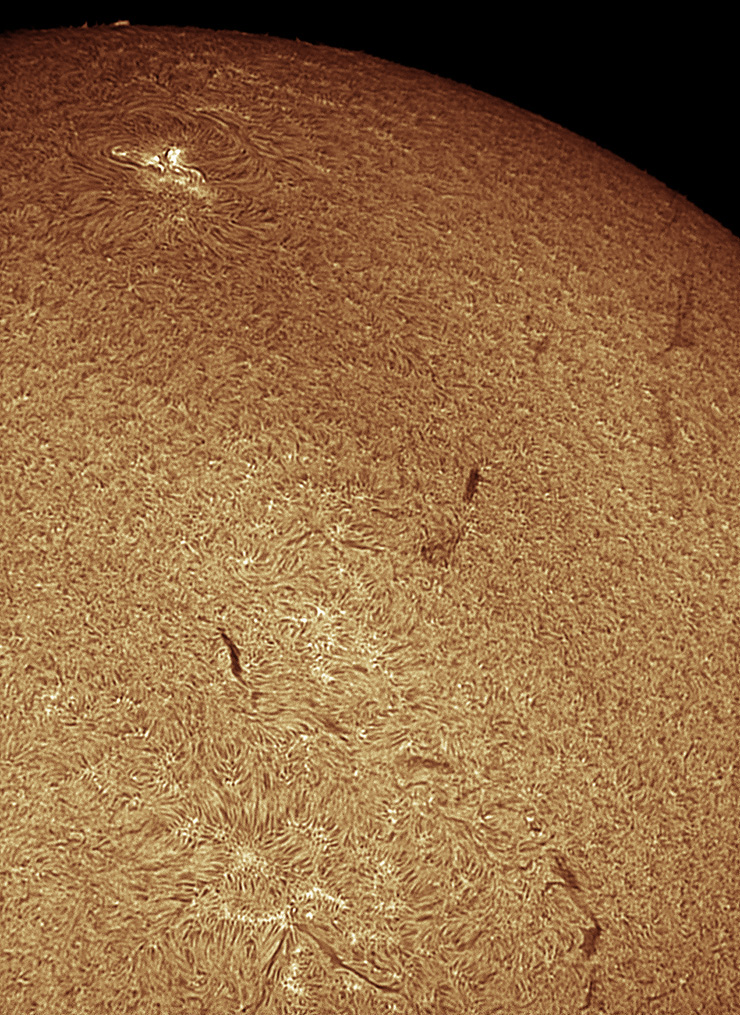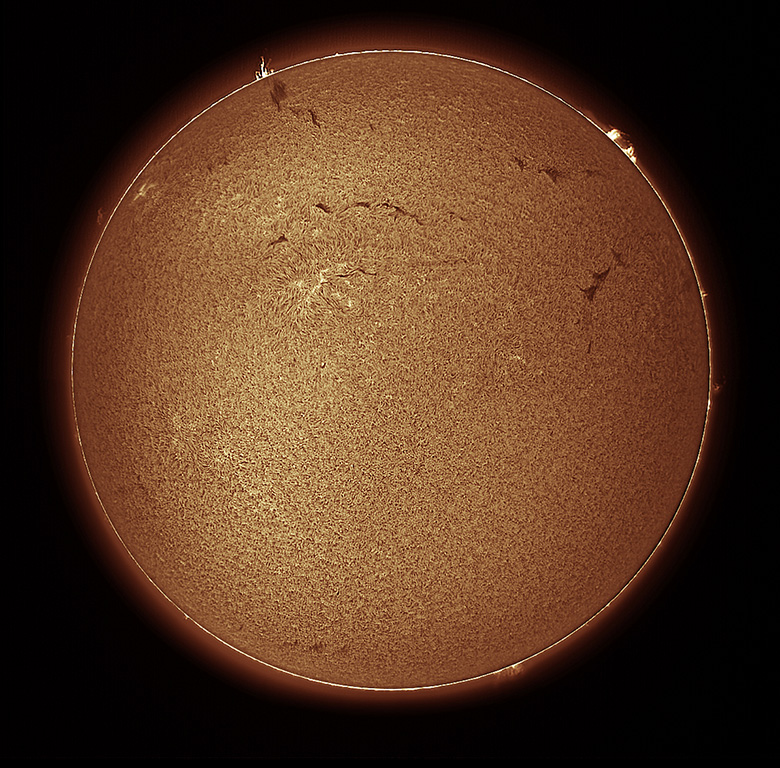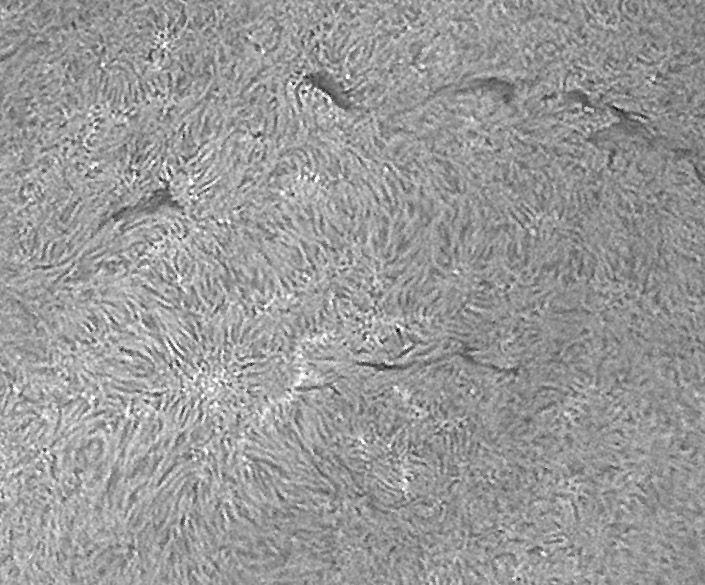Staring at the Sun, 22 :: home :: |
|
9/06/2010: Early morning photos using one and two Barlows, the Lunt doublestacked, the USB disk drive, and the PGR Chameleon. Sunspot group 1105 was "crackling with B flares" according to SpaceWeather.com and it made a spectacular sight in the eyepiece and (especially) on the computer screen. I tried streaming mode, made a run of about 3 minutes at 7.5 fps (the software complained that the computer couldn't grab 15 fps; which it can do when streaming to C:). It was instructive but not particularly productive of good photos. These are buffered captures of 500 frames each. I cut the exposure time to half of that called for in auto-exposure mode so that the brightest parts of the active region could be retained.
The systematic experiments alternated between 5ms exposures with 20db gain and 45ms and 0db. It really seems to depend entirely on the speed and quality of the seeing. With 300 frames to work with, electronic grain just isn't much of a problem. So, when in doubt, boost the gain and cut the exposure. I think. Adopted for today: the high gain, high speed solution for closeup work. On a lark, I did 300 frame captures of the full disk by doing a mosaic of two framings at two exposures using the 0.5x Antares compressor (this could be done at native FL but it's tight; if you can get just a few mm of extension, the Antares might just allow this without mosaic work). Here you go, 1200 images aligned and stacked:
Crop of center of solar disk at full resolution, single barlow threaded on 1.25-inch adapter.
|
:: top ::
© 2010, David Cortner





